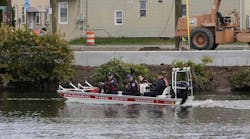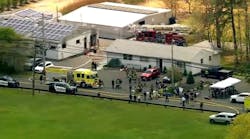In this, the second installment in a multi-part series of columns, I met with Bob Andrews, vice president and chief operations officer of community hazard mitigation services at ISO, to discuss newly implemented changes to the Fire Suppression Rating Schedule (FSRS) that impact not only the rural fire service but suburban and urban fire departments as well. Last month, we discussed a big-picture view of ISO and what led to the current revision of FSRS.
RFA: What about fire apparatus and equipment – this has traditionally been a sore spot, since it was felt that some equipment on the old schedule was non-value-added?
ISO: ISO has also shifted emphasis by adjusting point totals from the number of apparatus and the equipment carried toward the proper placement and deployment of those resources for those sections and has modified its apparatus equipment lists to include only items specified in NFPA 1901. That will more closely align ISO’s schedule with consensus standards and allow additional flexibility to revise apparatus equipment lists if NFPA 1901 changes significantly.
Many other areas of the FSRS fire department evaluation make increased reference to consensus standards. For instance, under fire department training, credit will be available for officer certification; and under pre-incident planning, annual inspections, rather than semiannual inspections, are needed.
RFA: Any changes to water supply sections of the FSRS?
ISO: In the area of water supply, the FSRS now includes specific credit for communities, water utilities, or fire departments that enhance their understanding of a water system through a periodic fire hydrant flow testing program that meets the intent of NFPA and/or AWWA standards. The revised schedule also includes additional credit for flow through a single hydrant, from a maximum of 1,000 gpm to 1,500 gpm, in accordance with AWWA.
RFA: How about a department’s risk reduction efforts through fire safety education?
ISO: The addition of Community Risk Reduction (including fire prevention, fire safety education, and fire investigation) represents a significant change within the FSRS, giving incentives to those communities that strive to reduce fire severity proactively through a structured program of fire prevention activities.
RFA: What does the new FSRS point structure look like?
ISO: ISO has revised the existing structure of the FSRS through the addition of new sections and through changes to the content and weighting of existing sections.
The total credit points for the existing major categories remain unchanged. The Fire Alarm, now called Emergency Communications is 10 points, the Fire Department is 50 points, and the Water Supply is still 40 points.
Community Risk Reduction has a maximum weight of 5.5 points, resulting in a revised maximum of 105.5 available points in the FSRS. The inclusion of that new section for extra points allows recognition for those communities that incorporate effective fire prevention practices, without applying undue penalty for those that have not yet adopted such measures.
An important change throughout the revised FSRS concerns the way that record keeping will be credited within a grading. When no documentation exists to substantiate an item being reviewed, no credit will be given for the section unless otherwise stated in the schedule. That is essentially a “no records, no credit” approach. ISO has also established a new limit of 75 percent of the credit points possible when only partial documentation of an item exists. ISO implemented those changes to emphasize the importance of proper record keeping.
Going forward, ISO will collect data regarding the relationships between the items in the schedule and their effect on fire loss — so that an evaluation of a community’s fire protection capability does not include items and concepts that have been replaced by the forward movement of technology. ISO is committed to ensuring that the FSRS remains the most accurate and dependable loss measurement tool in the industry.






